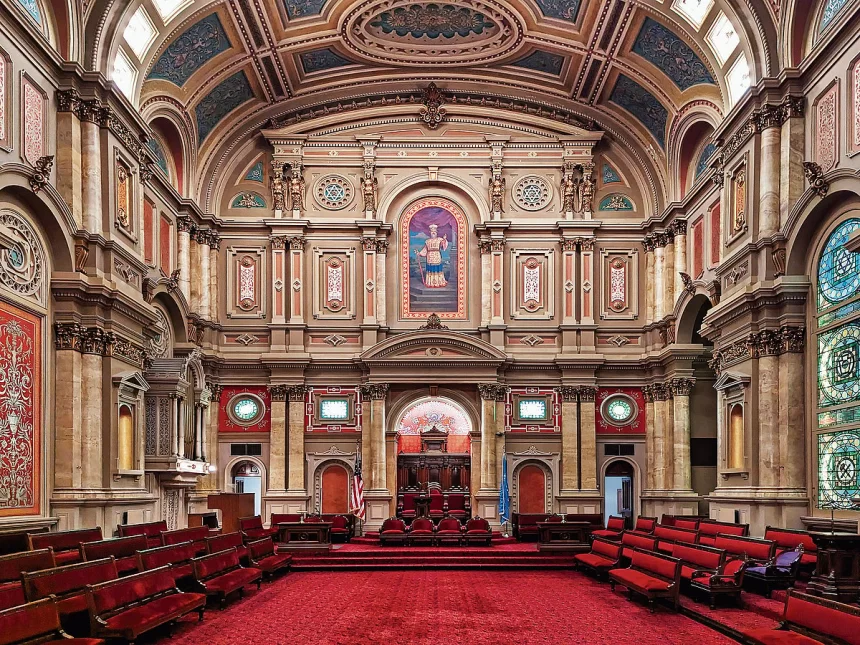The mystique of the masons
A brooding, stone-clad structure looms tall along North Broad Street in downtown Philadelphia. The Masonic Temple or the Grand Lodge of Pennsylvania, it possesses a stately appearance with an arched entryway, corbelled balconies, stained glass windows, and a soaring tower that could be straight out of a medieval castle.

A brooding, stone-clad structure looms tall along North Broad Street in downtown Philadelphia. The Masonic Temple or the Grand Lodge of Pennsylvania, it possesses a stately appearance with an arched entryway, corbelled balconies, stained glass windows, and a soaring tower that could be straight out of a medieval castle. The sombreness of the façade gives way to a corridor that leads to the Benjamin Franklin Room, which, though serving as only a sitting area, sets the tone for the visual treat to follow with a carved ceiling and murals. The adjoining museum displays a ritualistic apron once owned by George Washington. Such illustrious names are not an exception in the Masonic world. Over the centuries, over a dozen US presidents have been Freemasons, as have Mozart and Beethoven, Winston Churchill, Rudyard Kipling, Mustafa Ataturk, Alexander Fleming, Swami Vivekananda, Motilal Nehru, and JRD Tata. The Masonic Temple in Philadelphia boasts seven distinctly designed spaces. Each is named after its architecture as is evident upon entering Oriental Hall.
With multi-foliated arches, geometric patterns, and floral motifs, every square inch here takes inspiration from the Moorish style of the Alhambra Palace. An imposing staircase decked with idealised murals of historic civilisations and medieval cities leads to the upper floor, where an astounding architectural assemblage awaits. When Egyptian Hall, the first of the halls to be completed, was opened on January 2, 1889, a staggering 12,000 people came by to visit. It has remained a crowd-puller since then, instantly transporting one to the Nile Valley with intricate decorations derived from ancient tombs and shrines. While stylised cobras adorn the carpet, Masonic emblems such as the Seal of Solomon grace the ceiling. In striking contrast is the scarlet-hued Renaissance Hall, with a voluminous 50-ft-high ceiling and design elements borrowed from various Italian structures. Stained glass panels depict a gavel, symbolising authority and a reminder of self-improvement. Then there is the Corinthian Hall, the Temple’s largest chamber that can accommodate 400.
Named after the classical order of Greek architecture, this Hall is easily recognisably by its pediment, medallions, murals, and four caryatids inspired by the Acropolis. However, it’s probably best known for its floral-patterned carpet where an imperfection has been deliberately inserted. It’s the Masonic way to symbolise that we are all mere mortals and only the divine can achieve perfection





















